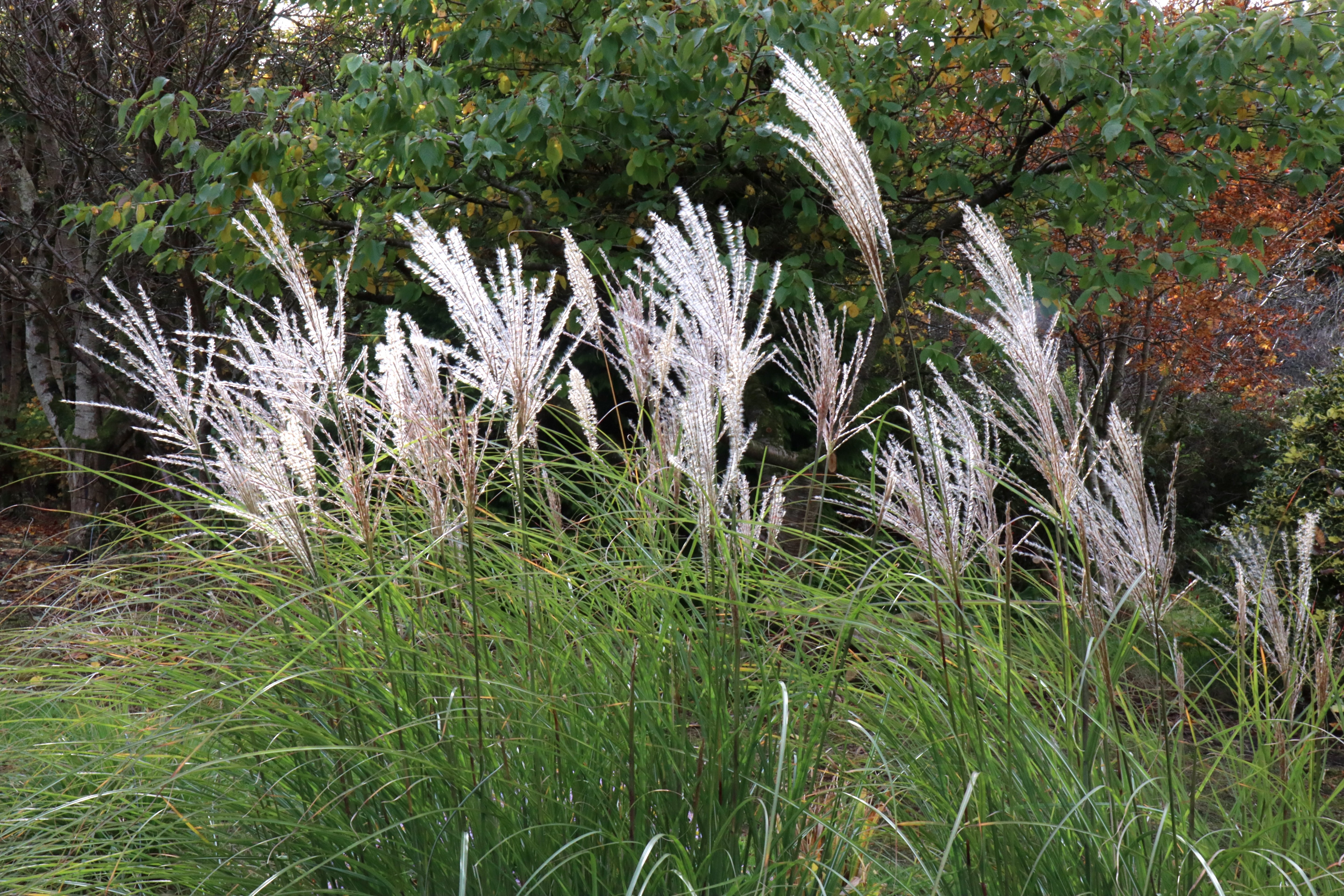Miscanthus sinensis 'Adagio'
Approx. 0.5 litre pot
About this cultivar:
Miscanthus sinensis 'Adagio' is a dwarf cultivar which is one of the shortest of the many Miscanthus cultivars available in commerce today. It is an upright cultivar which features extremely narrow, silver-gray blades which turn yellow in autumn. Tiny pink-tinged flowers appear in tassel-like inflorescences above the foliage in late summer, gradually turning into creamy white plumes by autumn as the seeds mature. Foliage and flower plumes persist well into winter providing good winter interest.
First Introduced by Kurt Bluemel, it has the Royal Horticultural Society Award of Garden Merit. It does sway slowly in the wind - much like the name implies!
- Position: Full sun, partial shade
- Soil: Almost any soil, grows well in Ballyrobert
- Flowers: July, August, September
-
Other features: Royal Horticultural Society Award of Garden Merit (RHS AGM)
- Hardiness: H6 - Hardy in all of UK and northern Europe (-20 to -15°C), Fully hardy, grows well in Ballyrobert
- Habit: Clump forming, Tufted
- Foliage: Semi evergreen
- Height: 90 - 120 cm (3 - 4 ft)
- Spread: 60 - 90 cm (2- 3 ft)
- Time to full growth: 2 to 5 years
- Plant type: Herbaceous Perennial, Grass like
- Colour: Green, yellow, white, red
- Goes well with: Helianthus, Echinacea, Coreopsis or Sedum
About this genus:
Miscanthus gets it name from the Greek for stem, miskos, and flower, anthos. It is commonly known as Maiden Grass. It is renowned for its versatility as a tall, perennial, ornamental grass. New introductions from Germany and Japan have improved stature, foliage colour, and flower heads.
Many of the popular hybrid Miscanthus are variegated (e.g., Miscanthus 'Morning Light') and many Maiden grasses also have attractive seed heads. Variegated ornamental grasses offer a colour contrast in the garden as well as a pleasing habit.
A few selections of Miscanthus sinensis are controversial because they re-seed excessively, primarily in disturbed sites. We continually discard any Miscanthus that displays this tendency.
Try pairing Miscanthus with flowering plants such as Helianthus, Echinacea, Coreopsis or Sedum. Mainden Grass also looks great in large drifts where the leaves and flower heads can be seen swaying in the wind. It is a tough, low maintenance plant which makes it perfect for wet or dry gardens in any situation apart from full shade. Miscanthus is versatile from a design standpoint; it can be used as a specimen, for massing or screening, in large containers, or at the pond's edge. I say plant this grass where its wonderful winter interest can be enjoyed!












